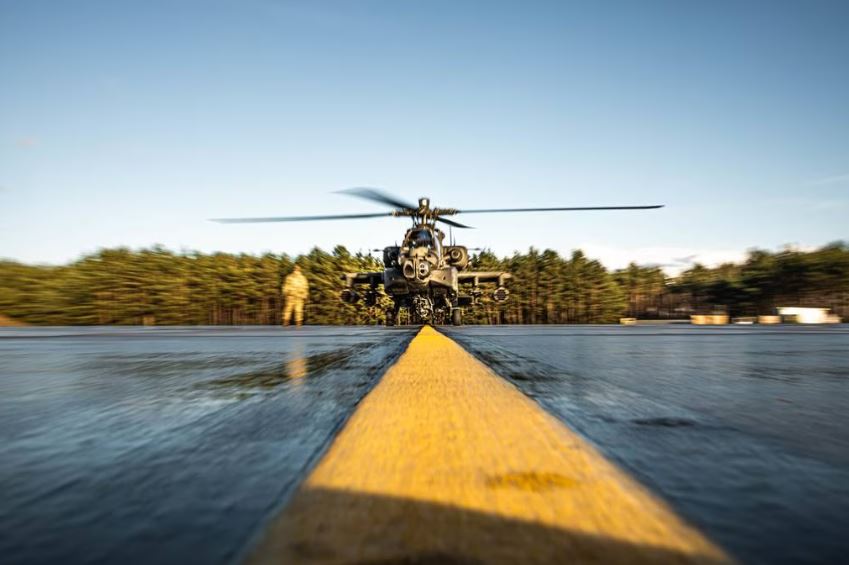
Washington: In a boost to aeronautic technology, Aerospace company Boeing plans to begin testing a full 3D-printed main rotor system for the AH-64 Apache attack helicopter in the spring of next year as part of an effort to cut out long-lead times and improve the overall supply chains for parts that are typically forged, according to company officials.
At the Association of the US Army’s annual conference, a Boeing and ASTRO America team displayed its first 3D part — a main rotor link assembly — printed on what is currently the world’s largest 3D metal printer at Rock Island Arsenal in Illinois.
ASTRO, a non-profit funded by the US government, won a $95 million contract from the Army’s Ground Vehicle Systems Centre to provide engineering support to develop additive manufacturing capabilities of large-size, large-scale parts including entire hulls for tanks and other combat vehicles as well as other prototype parts, explained ASTRO engineer Emma Gallegos.
That effort — called the Jointless Hull Project — involves a machine that is big enough to print an entire, single-piece M1 Abrams tank hull, she said.
The 3D-printed main rotor link assembly took 45 minutes to deposit the 6,000 series aluminium and eight hours to print. The typical lead time to traditionally forge the part is one year, according to Andy Pfeiffer, an engineering design lead and additive manufacturing expert for Boeing Global Services.
Boeing plans to print parts associated with the main rotor system and conduct full-scale fatigue testing against traditionally forged parts in April 2024, Pfieffer said.
But there are thousands of parts that are capable of being 3D-printed rather than made through castings and forgings that now require replacing, said Scott Rose, a welding engineer for Boeing’s research and technology unit.
The Apache program has so far provided a list of eight parts designated as items that require replacing as soon as possible and were deemed good candidates for 3D printing.
In addition to helping with engineering efforts, ASTRO is also gathering and retaining data that would help determine the business case for making various parts and components, Gallegos said.
In some areas, it might make sense to continue to make parts through forging because they are made in large numbers, Rose explained. But if the quantities are low, additive manufacturing might be the way to go, Rose added.
For some parts, Rose said, the microstructure of the material is stronger when 3D-printed than it would be through the traditional manufacturing process — and might last longer. Other considerations include the current supply base of some parts.
“If you already have the tooling and you’ve got a supplier willing to make it with the tooling, a lot of times the business case isn’t going to be there,” he said.
But if there’s an aircraft on the ground, repairing that aircraft quickly with a 3D-printed part rather than waiting on a traditionally forged part to avoid keeping it out of commission would factor into the business case as well, according to Pfeiffer.
“We’re excited to get parts qualified, especially large critical parts,” Pfeiffer said. “That unlocks a lot more.”








